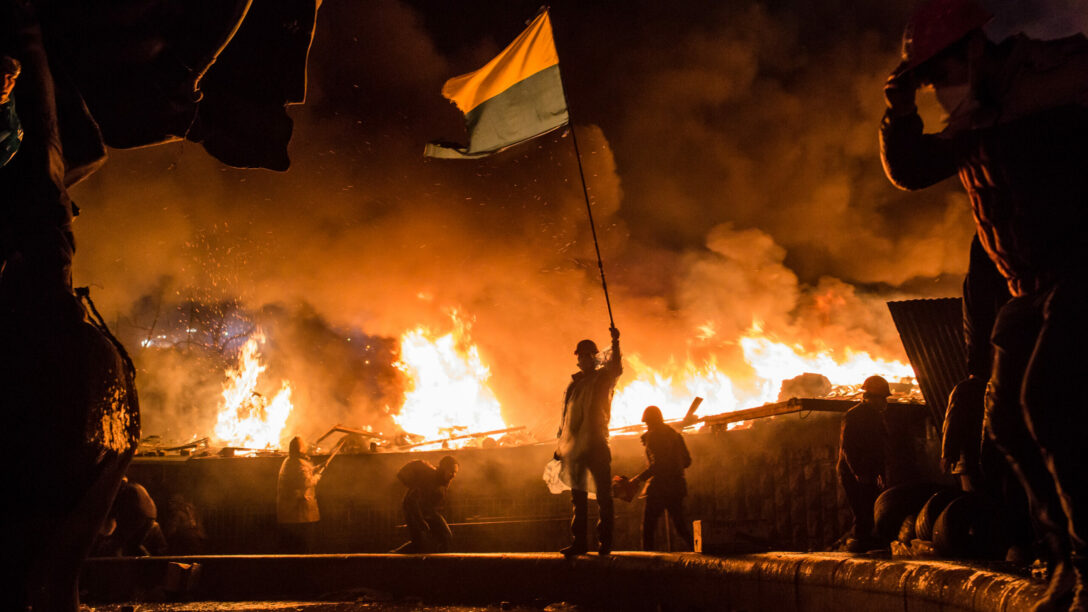On November 21, 2013, Ukrainian investigative journalist Mustafa Nayyem posted an innocent enough message on Facebook. “Meet you at 10:30 pm under the Monument of Independence,” he wrote. “Dress warmly, bring umbrellas, tea, coffee, a good mood, and friends. Repost in every possible way. Welcome!”
It was a response to Ukraine’s then-president Viktor Yanukovych bowing to pressure from Vladimir Putin to back out of an economic cooperation agreement between Ukraine and the European Union. Putin didn’t like the idea of Ukraine drawing closer to Europe—and away from him—so he sent Yanukovych a massive aid package, which was, essentially, a bribe. Like many other young Ukrainians, the 32-year-old Nayyem was not happy with the decision, which meant that Ukraine would continue to be stuck in the mentality and system of the sovok, the “dustpan,” which is slang for the Soviet era. So he called people out to protest. And because he was a bit of a journalistic celebrity, people listened and came out—lots and lots of people. And they stayed and stayed and stayed. Even when Yanukovych sent goons to beat up the college students and young people on Kyiv’s Maidan, or public square, they stayed and more people came to join them, people from all over the city, and then from all over the country.

















